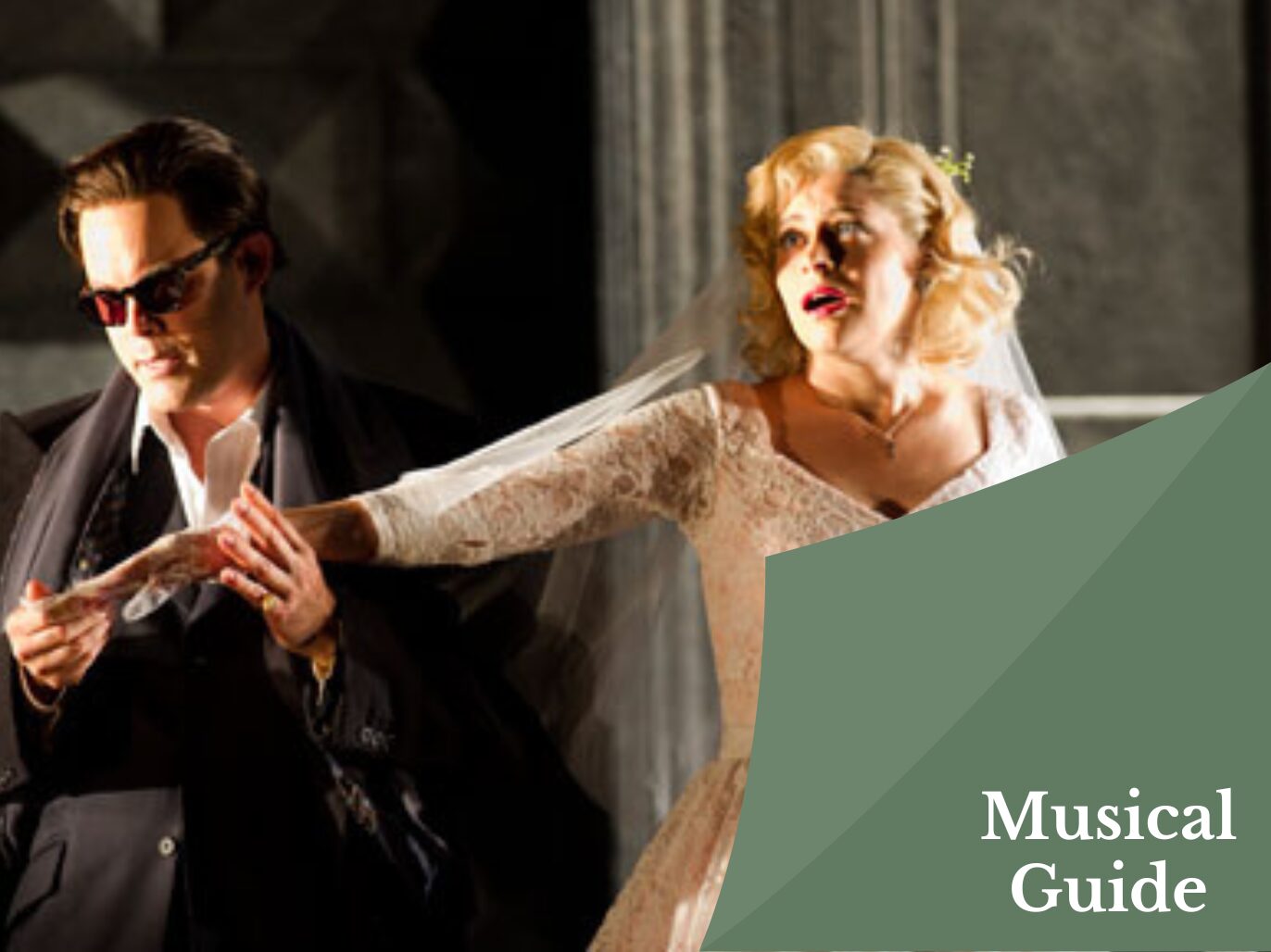Mozart’s mastery of the dramatic is put on full display throughout his 23 operatic works and his iconic operatic duets that capture and distill the nature of his characters and their intimate interactions. Heartbreak, arguments, reassurance and betrayal are all shown in intimate exchanges sung with heavy hearts and full voices in Mozart’s arias and duets. Let’s take a look at some of Mozart’s most popular operatic duets, and explore the surrounding context that has made them so dear to our hearts and ears.
View author's page
Reading time estimated : 6 min
“La ci darem la mano” – Don Giovanni
Full of false promises and silver tongues, Don Giovanni’s famous duet between Don Giovanni and Zerlina in act one is a fine display of Mozart’s dramatic flair in this opera buffa. Translating to “Give me thy hand my dearest”, Giovanni uses his infamous charm to sway Zerlina to come with him and leave her betrothed, Masetto. We hear Giovanni goad a hesitant Zerlina into leaving with him, and Zerlina laments her beloved Masetto “I would like to, and I wouldn’t, My heart is trembling a little.” (“Vorrei e non vorrei, Mi trema un poco il cor. Felice, è ver, sarei, Ma può burlarmi ancor”). Mozart uses a major mode for Giovanni’s lines, emphasising his confidence and charm, contrasting with Zerlina’s hesitation as she responds in the minor mode. Finally Giovanni’s insistence beats Zerlina’s resistance and she joins Giovanni singing “Andiam!” and their voices join together to sing the last verse.
“Sull’aria” – The Marriage of Figaro
Les Noces de Figaro, known also as the Marriage of Figaro is another of Mozart’s opera buffa – comedic opera works. The meddling Countess Rosina Almaviva is dictating a message to Susanna that would expose the Count and his infidelity. Mozart’s masterful voice pairing highlights the friendship and trust between the two women as their parts harmonize beautifully, with Suzanna repeating each phrase after the Countess.
“Bei Männern, welche Liebe fühlen” – The Magic Flute
From silver tongues to meddling women, Mozart also writes about true love. In this tender waltz-like duet from The Magic Flute, Papageno and Pamino sing of joys and marital love as Pamina comforts Papageno who, longing for love, seeks reassurance in his friend. Mozart uses consonant harmony – thirds and sixths – and voice matching to emphasise their synchronous ideas.
“Prenderò quel brunettino” – Così fan tutte
While tender duets are all well and good, we have firmly established Mozart as the king of drama in the operatic world – at least several films, a television series and many books have. The most perfect example of this is Così fan Tutte, also translated as “The School for Lovers”, as tales of trickery and seduction swirl around the two sisters Diorabella and Fiordiligi. With their fiancés away in war, the sisters find themselves brazenly courted by two “strange men” – unaware that these men were in fact their conniving fiancés, endeavoring to prove that all women are unfaithful!
The two sisters each express their desire for their choice of man (“I’ll take the brunette one” as the title suggests) and they feel themselves being won over by these men sent to prove that “all women are like that” (the alternate title of this opera). The fast staccato like music and syncopated rhythms enhances the carefree-like feel to this duet, making it a real treat for the ears.
“Papagena! Papageno!” –The Magic Flute
Opening with the famous “pa, Pa, PA!”, we can only be back in the wonderful sonic universe of The Magic Flute. This exciting and frilly duet in rondo form (a musical structure that turns around one central theme with several variants) is the musical exclamation between Papagena and Papageno who are to be married. The music is simple and playful, the aforementioned call and response between the characters which creates the feeling of harmony and understanding between the characters and the musical setting.
“Ah, perdona al primo affetto” – La Clemenza di Tito
Moving on to a more serious work – La Clemenza di Tito or The Forgiveness of Tito roughly translated – is an opera seria, or the serious counterpart to opera buffa containing all of the drama but a little less of the buffoonery. In this duet, the sweethearts Annio and Serville simultaneously celebrate and mourn their burgeoning love for each other as they have been told they will soon be torn apart by Emperor Tito’s desire to marry Serville. This wonderful duet showcases Mozart’s ability to dramatize the emotional journeys of his characters as we hear Annio and Servilla asking each other for forgiveness, the rising tension as both search for a resolution and then finally reconciliation, as they sing together “When one soul unites with another, what happiness a heart experiences!”
Everything you always wanted to know, but were too afraid to ask, about the legendary composer’s 23 operatic works.
The complete Mozart operas are available here on medici.tv.
